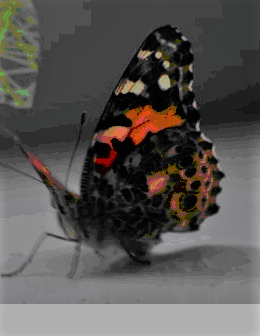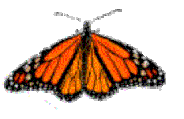Educator Onboarding
LEO Art Challenge Workshop
ICE 2019: Satellite Tracking, Orbits, and Modeling
SEEC 2019: Satellite Tracking, Orbits, and Modeling
Workshop:ITEC Trek-a-Sat
Workshop: 2018-01-27 Yerkes
Workshop: 2017-10-28 Carthage-Yerkes Electrostatics in Space
Workshop: 2017-06-29-BTCI-Life in Space!
Workshop: 2017-03-11 Yerkes
Workshop: 2017-02-07 SEEC
Workshop: 2017-01-28 Yerkes
Tools You Might Use
Educational Learning
Standards
Documentation
Butterfiles in Space
Schița subiectului
-
Butterflies in Space
Updated in August 2023
Author: Ioana Stoica, Tudor Vianu National High School of Computer Science, Bucharest, Romania
Short Description: Microgravity is a mystery we all wish to unravel – and this can only be done with experiments and careful observations. So, in order to choose the research questions, we studied the effects gravity has on living organisms, focusing on aspects that can be monitored by photos and videos.
Goals of the Lesson: The goal of this research project is to study the behavior of monarch butterflies (Vianuessa Cardui) in a laboratory environment, at constant pressure and temperature, and to compare the results with the data offered by NASA regarding the life of butterflies in microgravity. Then, we make suppositions on how butterflies would behave under the effect of microgravity and how the lack of gravitational force would affect their biological processes. Additionally, we compare the actual experimental data we collect with the data offered by NASA to verify our suppositions, stating the conclusions of our research and suggesting enhancements for future studies.
Students Ages: 13 - 17
Keywords: Earth and Space Science, Microgravity, Living Organisms, Gravity, Gravitational Force, Biology, Biological Processes,
NGSS Standard Connections:
LS1B: Growth and Development of Organisms
LS4C: Adaptation
As an aside, in the end we came up with a term of endearment for our butterflies,
naming them Vianuessa Cardui, because the name of our school is Tudor Vianu.
-
How would the world look without gravity?
The effects of gravity on living creatures, based on scientific studies, and their consequences in microgravity:
- Cell size
- Gravity: The size of single biological cells is inversely
proportional to the strength of the gravitational field exerted on the cell.
That is, in stronger gravitational fields the size of cells decreases, and in
weaker gravitational fields the size of cells increases. Gravity is thus a
limiting factor in the growth of individual cells [1].
- Microgravity: This suggests that organisms in microgravity might develop larger cells and thus, have larger dimensions.

- Inner/outer skeleton
- Gravity: Organisms evolving on Earth must develop inner or
outer skeletons for not being crushed by the gravitational force [2].
- Microgravity: Bone cells (or exoskeleton cells in case of insects) die if they can’t attach themselves to something. Without gravity exerting a downward pull on these bone cells, they float aimlessly about and eventually perish.

- Blood circulation
- Gravity: The vascular system must work against gravity in order for
blood to reach the parts of the body that are higher than the pump (the
heart).
- Microgravity: It’s possible that the lower parts of the body would receive less blood, while the upper ones will receive more, making some actions harder to perform and others easier. For example, a butterfly’s wings may be better vascularized in microgravity since they are situated in the upper part of the body [3].

-
What can we measure and observe through photographs and videos?
1. Photographs of the Butterflies:
-
Body shape and structure
- The size
- Colors
- Life Cycle
2. Videos of the Butterflies:

- Flight patterns
- Vitality (how active the butterflies are)
-
Body shape and structure
-
Observing the Growing Butterflies

In order to observe the butterflies safely, the butterfly chamber must be made properly for the butterflies to grow in. Ensure quality chamber by following the instructions given from the official resource collection of the Butterflies in Space project.
Greg Vogt, from the Baylor College of Medicine, describes an easy way for students to create their own butterfly chamber similar to the chamber put on the shuttle during the Butterflies in Space experiment!
Instructional Video:
-
1. Do the butterflies go through the metamorphosis stages normally?
- Hypothesis: Gravity influences a
lot of functions in the living organisms and its absence can have an effect
over a larva’s growing process. Therefore the caterpillar might transform
slower into a pupa, while it could also spend more time in the pupa form. The
butterfly might need more time to fully inflate its wings (because of the
effect of microgravity on its blood circulation) and to dry them.
- Methods: We will watch the photos taken by the camera on ISS and measure the time needed for the larvae to turn into pupa and for the pupa to turn into butterfly and see if it takes more or less time.
2. Does microgravity affect their movement pattern?
- Hypothesis: Microgravity might influence the butterflies’ speed
(they can achieve greater speeds with far less effort) and cause muscle
atrophy. We presume they will have issues maintaining their balance, will be
disorientated and move chaotically. Also, they might become lazier.
- Methods: We will analyze the videos from ISS and try to find a pattern for the butterfly’s flight and if such a pattern exists, we will compare it to the movement patterns seen on Earth.
3. Do they have differences in structure or appearance?
- Hypothesis: The larvae on ISS might be larger than those on Earth
because their cells could be larger in microgravity. The exoskeleton in all
stages of metamorphosis (caterpillar, pupa and butterfly) might also be
slightly thinner because the cells forming this type of tissue develop much
slower in microgravity. Also, the butterflies’ wings might remain a little
wrinkled because the low gravity affects the blood flow that is pumped for
inflating them.
- Methods: We will measure the dimensions of the butterflies and larvae in the box on ISS (from pictures) and compare them to the dimensions of our insects. The “butterflynauts” may well be larger, but also smaller in size.
- Hypothesis: Gravity influences a
lot of functions in the living organisms and its absence can have an effect
over a larva’s growing process. Therefore the caterpillar might transform
slower into a pupa, while it could also spend more time in the pupa form. The
butterfly might need more time to fully inflate its wings (because of the
effect of microgravity on its blood circulation) and to dry them.
-
The projects developed by students from 11 D class and 9B class
-
Article on Gravitational Biology
http://en.wikipedia.org/wiki/Gravitational_biology
- Summarizing gravitational influences for life on earth, as well as life outside of earth.
NASA Report on Butterfly Emersion
https://www.nasa.gov/mission_pages/station/expeditions/expedition22/butterflies.html
- Short NASA report detailing Butterflies in Space project, describing the event when butterflies first emerged from their cocoons and relaying general aspects of the project.
Butterflies in Space Resource Collection
- Butterflies in Space experiment overview, with different informational background lessons and videos, along with direct videos of the experiment hosted in space!
-
Send a Postcard to Space through NSS Supported Blue Origin Club For The Future initiative!
Visit: SpacEdge Academy Postcards in Space Course

